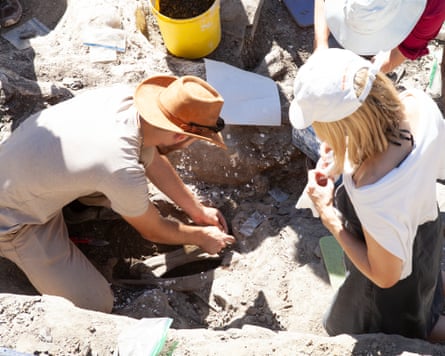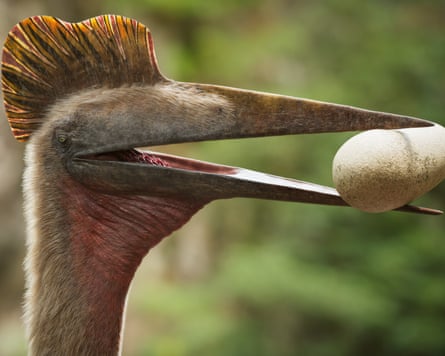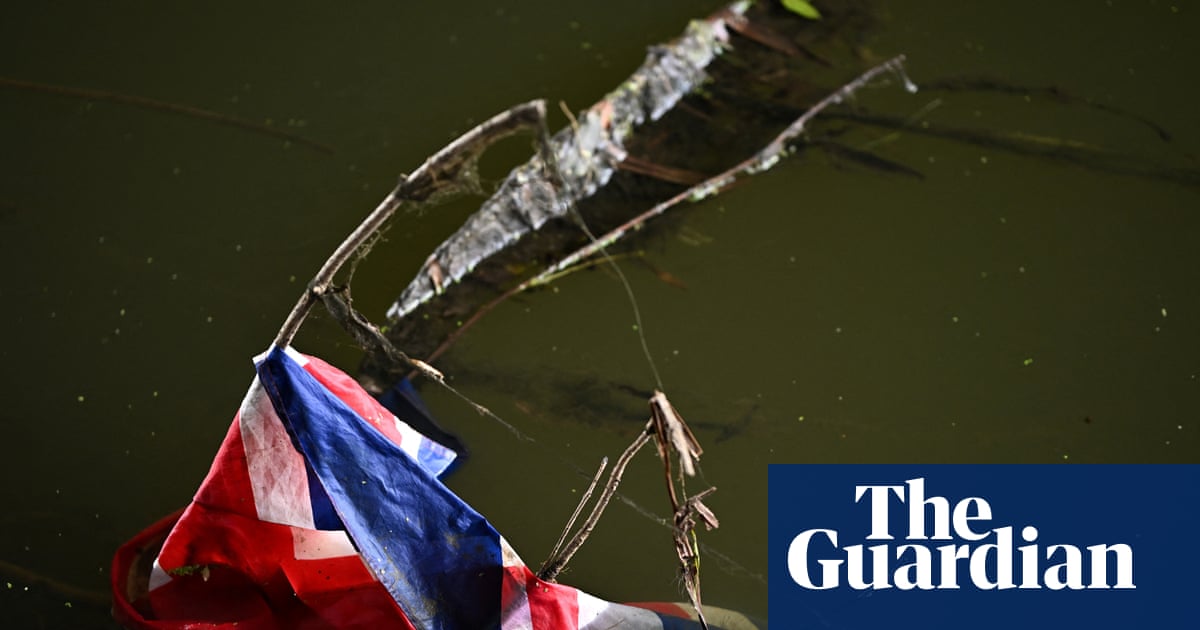It brought dinosaurs stomping and roaring into the sitting rooms of millions of viewers. Now, 25 years after the series first aired, a new, updated Walking With Dinosaurs is back on the BBC this weekend.
In the intervening years, science has not stood still. About 50 species have been discovered each year since 1999 and the advent of powerful imaging techniques and digital reconstruction have led to major advances in our understanding of what dinosaurs looked like and how they lived. Here are some of the biggest developments.
Feathered dinosaurs
By the 1990s, a handful of feathered dinosaur fossils had been identified but they were not well preserved and their wider significance remained unclear.
“The public wasn’t ready for it,” said Dr Dave Hone, a palaeontologist at Queen Mary, University of London. “Now we’re at the point where we’ve got dozens of species definitively feathered and probably a hundred plus where we’re very confident they had feathers because all their relatives do. That pushes feathers right down the family tree, which is a pretty big shift.”

Feathers matter, not only in terms of appearance, but they have added weight to the argument that some dinosaurs were warm-blooded and shape our understanding of dinosaur behaviour and evolution.
“Undoubtedly the most surprising discovery regarding dinosaurs in the last 25 years has been the discovery of the feathered dinosaurs in Liaoning province in China, and the realisation that many of the theropod dinosaurs at least had a covering of feathers and not reptilian scales,” said Dr John Nudds, a senior lecturer in palaeontology at the University of Manchester.
“These were probably initially for insulation of eggs, possibly also for display, and were later modified for flight. This has proved beyond reasonable doubt that birds evolved from dinosaurs and in fact are dinosaurs.
Arctic dinosaurs
Picture a Jurassic landscape and you’re probably thinking of a jungle with a few simmering volcanoes in the background. But scientists now believe that dinosaurs lived in much more varied climates, including in the planet’s coldest extremes.
The recent analysis of hundreds of fossils, including those of baby dinosaurs, recovered from northern Alaska suggests that they reproduced in the region and that was probably their permanent home rather than a stop on a seasonal migratory route. The region would have been plummeted into darkness for four months of the year and experienced temperatures well below freezing.
Weird, big, new species
T-rex, diplodocus, stegosaurus: the top trumps of the dinosaur kingdom have remained unchanged in popular imagination for decades. But no shortage of unique and charismatic species have been unearthed in the past 25 years, many of which palaeontologists would like to see brought to wider attention.
“One of the weirdest ones is deinocheirus,” said Prof Paul Barrett, a palaeontologist at the Natural History Museum in London. The species had been tentatively identified based on the discovery of a gigantic pair of arms in the 1960s, but it was only in 2014 when a pair of more complete skeletons were described that its unusual features came into full focus.
“It looks like the offspring of a night of passion between a radiator and a duck,” said Barrett. “It’s got a duck-like head, a huge sail on its back, sideways claws, it looks like it has been put together by a committee.”
“Absolutely staggering numbers of new species have been found,” said Hone, citing Yi qi, a feathered gliding dinosaur, as a personal favourite. “It’s basically a hybrid of a bird and a flying squirrel,” he said.
Discoveries during the past two decades have also seen larger-than-ever species unearthed. Patagotitan (announced in 2014) has an estimated length of 37 metres and estimated weight of 69 tonnes, taking the title for largest known land animal, and Dreadnoughtus (unearthed in 2005) also lives up to its battleship-scale physique.
“Some of these things are pushing 60-70 tonnes in weight,” said Barrett. “We’re having to figure out the challenges they would’ve faced moving around and eating.”
Dinosaurs taking to the seas
As old dinosaur debates have been set to rest, new ones have unfolded. The discovery of a series of spinosaurus fossils has opened up new battleground over whether these dinosaurs may have been adapted to living and hunting in the water. Dinosaurs have previously been assumed to only live and hunt on land (plesiosaurs and pliosaurs are marine reptiles, not dinosaurs).

“The big question is was it a pursuit predator? Or did it hunt like an enormous heron and grab fish with its mouth?” said Dr Jeremy Lockwood, a GP-turned-palaeontologist based on the Isle of Wight who discovered a relevant specimen nicknamed “the horned crocodile-faced hell heron”. “It’s a furious controversy that’s livened up the world of palaeontology.”
At 15-metre snout to tail, spinosaurus is longer than any other meat-eating dinosaur, has conical teeth like those seen in crocodiles, a long newt-like tail and dense bones that might help it sink in order to swim underwater.
Computer simulations have raised questions about its hydrodynamic properties, however, with one suggesting it would have rolled over on its side when submerged, according to Lockwood. “I can see both points of view but I wouldn’t dream of settling on one,” he said.
Lizards in a soft shell

Among the most important discoveries of the past decade is that of soft-shelled eggs, complete with fossilised embryos, as old as 200m years. “All the eggs we’d had until then were like hen eggs,” said Hone. The latest evidence suggests that many dinosaur species laid soft-shelled eggs, something like those laid by lizards or crocodiles today.
Even more intriguingly, analysis of the teeth of embryos within some of the eggs, suggests that they gestated for up to six months. This opens up a new vista on the reproductive lives of dinosaurs, suggesting that they may have buried eggs in nests or burrows.
“Are they looking after a nest for months at a time? Or digging a hole and buggering off and coming back a year later to see if their babies have hatched?” said Hone. “All of the options are really weird.”

 3 months ago
165
3 months ago
165

















































